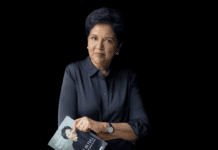 17-year-old author Anshu Malika Roja Selvamani’s – voice betrays a calm gravitas far beyond her years. After a few failed attempts to connect over Zoom, we finally begin the scheduled interview through a telephone call. She introduces herself as an author, entrepreneur, programmer, and Youtuber. Her confidence sends me searching my 17-year-old self for anything similar and returns wanting.
17-year-old author Anshu Malika Roja Selvamani’s – voice betrays a calm gravitas far beyond her years. After a few failed attempts to connect over Zoom, we finally begin the scheduled interview through a telephone call. She introduces herself as an author, entrepreneur, programmer, and Youtuber. Her confidence sends me searching my 17-year-old self for anything similar and returns wanting.
Anshu speaks frankly about her love for writing as a mode of expression. Having started writing when she was seven years old, she was quickly recognized for the skill with which she could wield language, and published multiple pieces in her school magazine.
So, was the decision to publish her own book, collecting her writings, just the logical next step in her career trajectory?
Not really.
The book, The Flame in My Heart, is a collection of articles, stories, and poems by the author, narrated from the perspective of a person quite similar to her, yet distinct in existence. Anshu identifies the work as an attempt to come to terms with her struggles with severe health issues, childhood abuse, and the ensuing mental health concerns and depression.
As she talks about her past in snippets, her diction picks up an accent, and the words flow faster. I am reminded of how we adapt an observer identity when talking about our traumatic memories. Perhaps it is her ‘fictional disguise’ speaking through her.
When asked about her literary alter ego, and how she and the character diverge, Anshu is pleased. She reminisces about her conscious efforts to make the character relatable, yet different. A young protagonist with ambitious dreams.
Is she a writer, I ask her.
No, she replies. It was a conscious choice to not make the character a writer.
I think back to her introduction of herself, refusing to be categorized under a single label. I can see the author speaking through her reflection.
As she talks about honing her skills through the period of the lockdown, she sounds amused. It was in that long lapse of loneliness when she had decided to collate her works into a book that could possibly speak to her peers, voicing the tenets of sorrow that we gather in our everyday. When she talks about reaching out to people through her art, helping others in similar positions understand themselves, perhaps feel seen, there is an earnestness in her voice. Her calm, public persona slips a little, and the hopeful teenager peeks through, with dreams of making the world a better place.
She talks of her literary hero, Anne Frank, and how she related to The Diary of A Young Girl, finding strength in her optimism in the face of relentless adversity.
When asked about her other identities, she explains how she runs two organizations as an entrepreneur. Art for a Cause is a crafting platform to sell products customized with digital art. In her daily transit across the city of Chennai, she had come across many children working in building sites and roadside eateries and had decided it necessary to do her part in alleviating their lives. Thus, the proceedings from this platform are used to fund the education opportunities of poorer children. She also scouts talent from marginalized communities to be employed in her organization. Her NGO Power of One, on the other hand, is devoted to spreading mental health awareness and works to empower women in their daily lives.
Her programming work is also an extension of these altruistic ethos. She has developed multiple apps in collaboration with the many orgenizations, including one for road safety, and another to help realize universal access to education.
In her sparse but well-chosen words emerges the portrait of a socially conscious young adult well aware of the impact her activities can have on the world. She seems to be acting with wisdom seldom found in people much senior in age.
After a brief discussion of her stints as a model for a few clothing brands, and her vlogging habits on Youtube and Instagram, we return to her book. I ask if there is a future she has imagined for her alter ego, and hear her smile through her words. The ending is left open to possibilities.
The future’s not ours to see.
But she does have plans to diversify her repertoire as an author, delving into nonfiction as well as genre work. It is exciting to hear her think aloud about the possibilities of time.
I have enough to write the article, and inform her as much, congratulating her on her success, and wishing her the best going forward. But I pose a request.
Would she mind reciting a piece of her choice from the book?
The young author readily agrees. The poem she chooses is called The Memories of Time.
It is set within the sick white walls of a hospital, and the images drawn up are vivid with intimate pain. It is a raw representation of innocence lost with a clinically clean choice of words. This time her reflection speaks through her, wearing her serene voice as a disguise. However as it nears its end, in a skillful manoeuvre of language, the poem plants seeds of hope in a handful of lines, without betraying its honest expression of sorrow.
I am inadvertently reminded of Anne Frank.
Think of all the beauty still left around you, and be happy.







